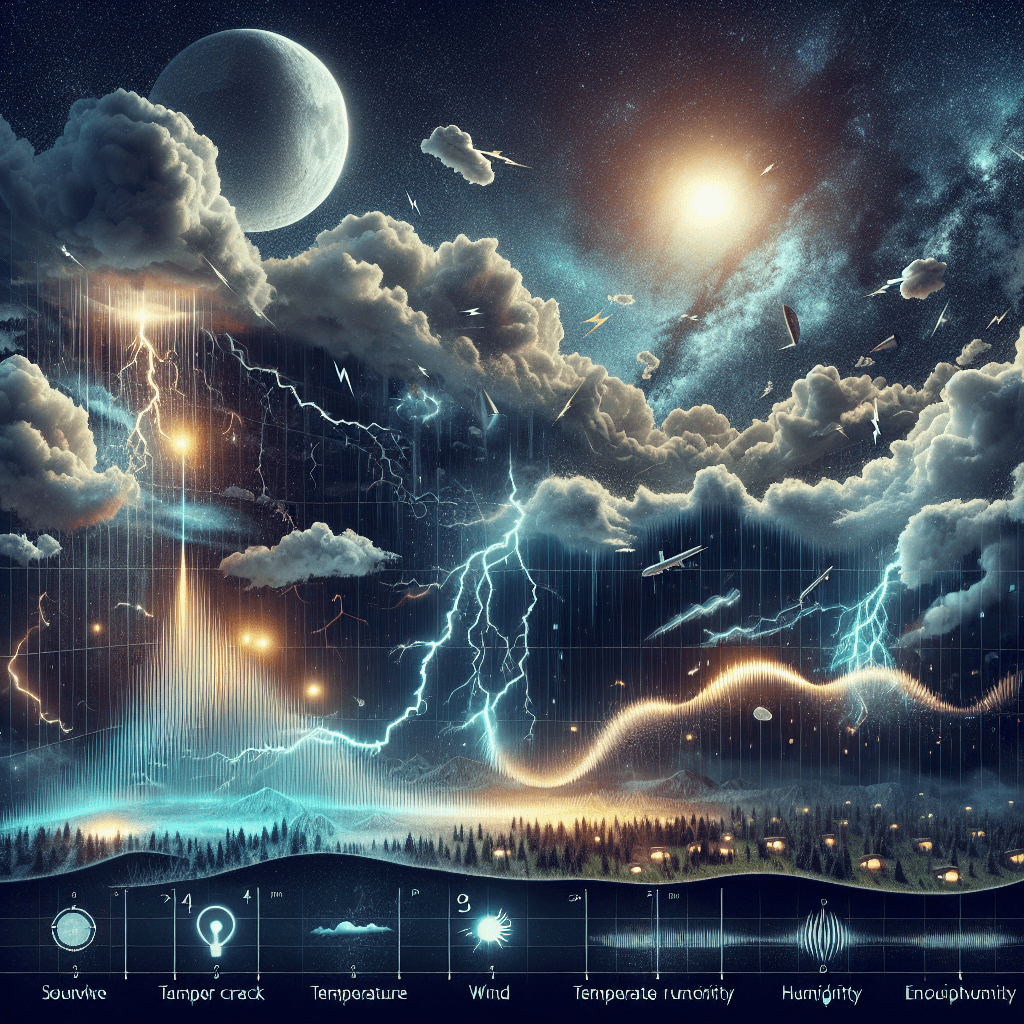Why does thunder sometimes sound like a sharp crack and other times a long rumble
The startling difference between a sharp crack and a low rumble isn't the storm, but your front-row seat to a lightning bolt's chaotic, miles-long journey through the sky.


Too Long; Didn't Read
TLDR: A sharp crack means lightning is close and you hear the entire shockwave at once. A long rumble means lightning is far away; you're hearing the sound from different parts of the long lightning bolt arrive at different times, stretched out by distance and echoes.
The Sound of a Storm: Why Does Thunder Sometimes Sound Like a Sharp Crack and Other Times a Long Rumble?
Have you ever been startled by a sudden, deafening CRACK of thunder that seems to shake the very windows of your home? Or perhaps you've listened to a distant storm, its presence announced by a low, continuous rumble that rolls across the horizon. These two distinct sounds are signatures of the same natural phenomenon, yet they couldn't be more different. This isn't random; the sound a thunderstorm makes is a direct message about its power and, most importantly, its proximity to you. This post will delve into the fascinating physics behind thunder, explaining exactly why it can be a sharp crack one moment and a drawn-out rumble the next.
The Birth of Thunder: A Superheated Explosion
Before we can understand the different sounds of thunder, we must first understand what thunder is. It's not the sound of clouds bumping into each other, as childhood myths might suggest. The real cause is far more dramatic.
A bolt of lightning is an incredibly powerful discharge of electricity. In a fraction of a second, it heats the narrow channel of air through which it travels to an astonishing 30,000°C (about 54,000°F)—that's five times hotter than the surface of the sun. This extreme heat causes the air in the channel to expand explosively, creating a powerful shockwave that radiates outward. This shockwave is what our ears perceive as thunder. Every single lightning bolt, no matter its shape or size, creates this explosive shockwave. So why don't they all sound the same? The primary answer is distance.
The Deciding Factor: Your Distance from the Strike
The most significant factor determining whether you hear a crack or a rumble is how far away you are from the lightning bolt.
The Sharp "Crack"
If a lightning bolt strikes nearby (typically within a few hundred meters), you hear a sharp, loud "crack" or "clap." This is because the sound from the entire length of the lightning channel reaches your ears at almost the same instant. You are so close that there is no time for the sound to get distorted or stretched out. You are hearing the raw, unfiltered power of the initial shockwave—a single, explosive event. If you hear this sound, the storm is directly overhead, and you should be in a safe location.
The Long "Rumble"
A rumble, on the other hand, is the sound of a distant storm. A lightning bolt isn't a single point in the sky; it's a long, jagged channel that can stretch for several miles. When you are far away, you hear the sound from different parts of that channel at different times.
Imagine the lightning bolt is a very long string of firecrackers set off all at once.
- The sound from the section of the bolt closest to you will reach you first.
- The sound from the middle of the bolt will arrive a moment later.
- The sound from the farthest end of the bolt will arrive last.
Your brain processes this stream of delayed sounds as one continuous, rolling rumble. The longer the rumble lasts, the longer the lightning channel was.
More Than Just Distance: Echoes and Atmospheric Effects
While distance is the main character in this story, other factors play important supporting roles in shaping the sound of thunder. These elements are what give a rumble its complex character.
- Reverberation and Echoes: Just like a shout echoes in a canyon, the sound waves of thunder bounce off the surrounding landscape. They reflect off mountains, hills, buildings, and even the ground. These multiple echoes arrive at your ears at slightly different times, further stretching out the sound and adding to the rumbling effect.
- Atmospheric Conditions: The atmosphere is not uniform. Differences in temperature and wind can bend, or refract, the sound waves of thunder. Layers of warm and cool air can trap and scatter the sound, causing it to muffle, change in pitch, and last longer than it otherwise would.
- The Shape of the Bolt: The structure of the lightning itself matters. A bolt that travels horizontally between clouds for many miles will often produce a longer, more sustained rumble than a short, vertical bolt that strikes the ground nearby.
Conclusion
In essence, the sound of thunder is a story told by sound waves. A sharp, sudden crack is a short story, telling you that the lightning strike was powerful and dangerously close. A long, rolling rumble is an epic tale, describing a lightning bolt miles away, with its sound stretched by distance and embellished by echoes from the landscape. So, the next time a storm rolls in, listen carefully. The sounds you hear are not just the noise of a storm; they are a direct, audible measurement of its position and power, offering a beautiful (and practical) insight into the physics playing out in the sky.


